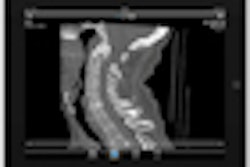Dear AuntMinnie Member,
The U.S. government is on the warpath again in its enforcement of Medicare fraud and abuse rules. For the second time in a month, federal investigators have filed a high-profile case against an imaging firm, alleging violations of Medicare regulations.
This time, the imaging company is in Michigan. Federal investigators charge that the owners of Universal Imaging of Ypsilanti committed multiple violations of the False Claims Act, including paying kickbacks to physicians for patient referrals and violating Medicare rules that require physician supervision onsite for noncardiology tests at the facility.
The federal complaint included a number of other charges against the firm, and it also noted that at least one of the referring physicians who received kickbacks allegedly ordered unnecessary imaging tests on patients -- exposing them to radiation in the process. Read more about this case by clicking here.
Are the recent busts just an aberration, or should you be consulting an attorney regarding your contracts with your referring physicians? Look for more coverage on this important issue in the weeks to come in our Imaging Leaders Digital Community at leaders.auntminnie.com.
In other news, the U.S. government reported this week that growth in healthcare spending remained at subdued levels in 2010, rising at a rate only slightly higher than in 2009 and at about the same level as overall growth in the economy. Will the news put the damper on efforts to cut Medicare reimbursement for advanced imaging? Don't bet on it, but you can read the story by clicking here.
Improving quality in your 3D lab
Researchers from Stanford University saw a big reduction in error rates at their 3D lab after implementing a structured quality control program, according to an article we're featuring in our Advanced Visualization Digital Community.
Postprocessing of 3D images can be highly operator-dependent, and the university had found that ad hoc efforts to improve quality in the lab didn't quite cut it. Instead, Stanford implemented an ongoing quality control program based on Six Sigma principles.
After analyzing the program's impact, the researchers found that it cut error rates by as much as 50%, and the effect persisted even after the initial training period. Find out how they did it by clicking here, or visit our Advanced Visualization Digital Community at av.auntminnie.com.



















